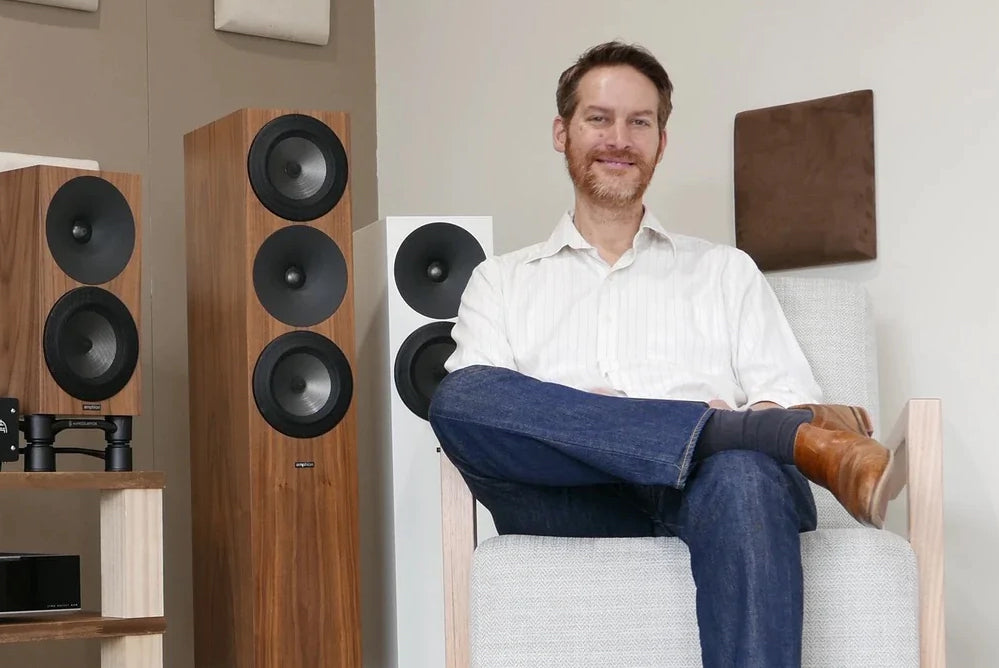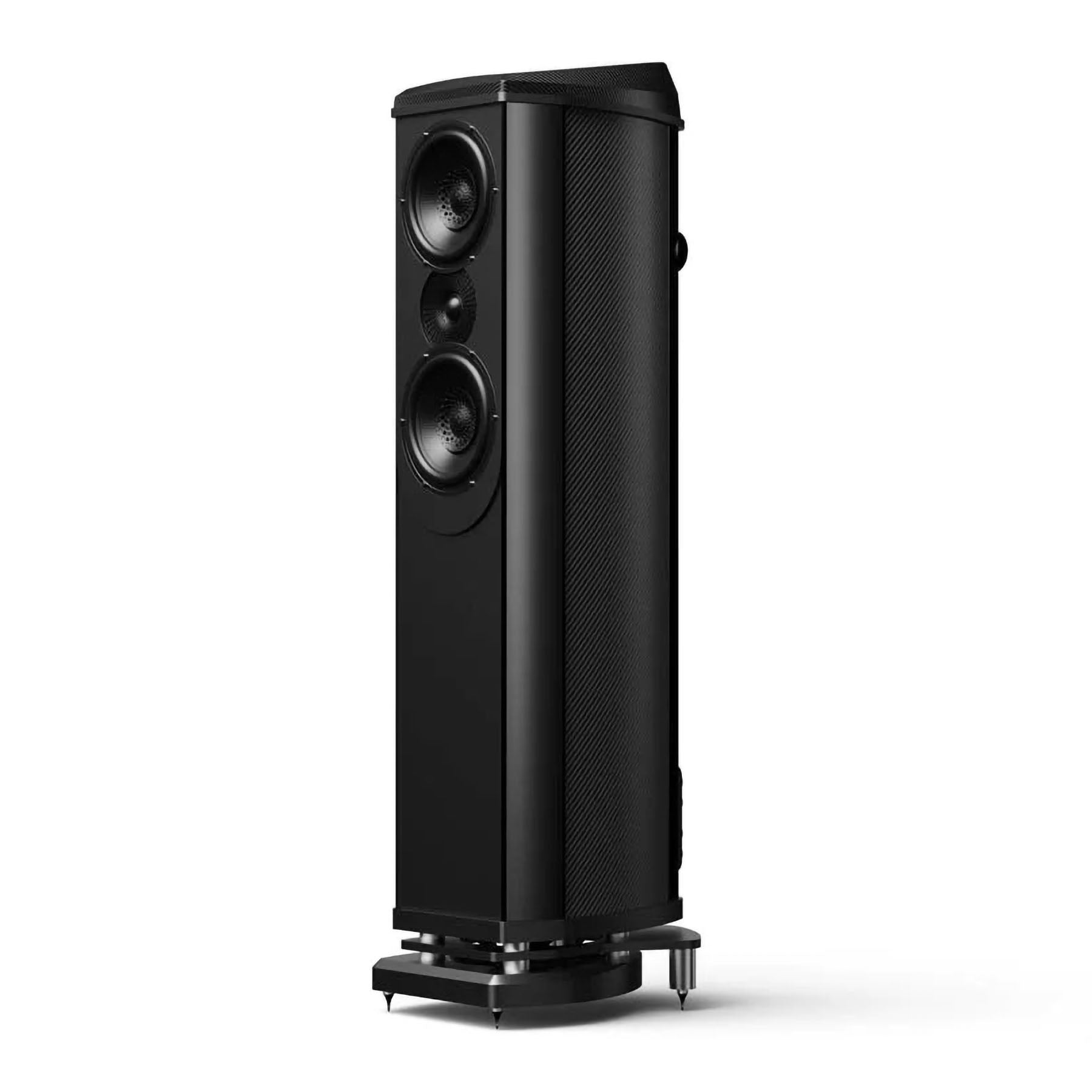
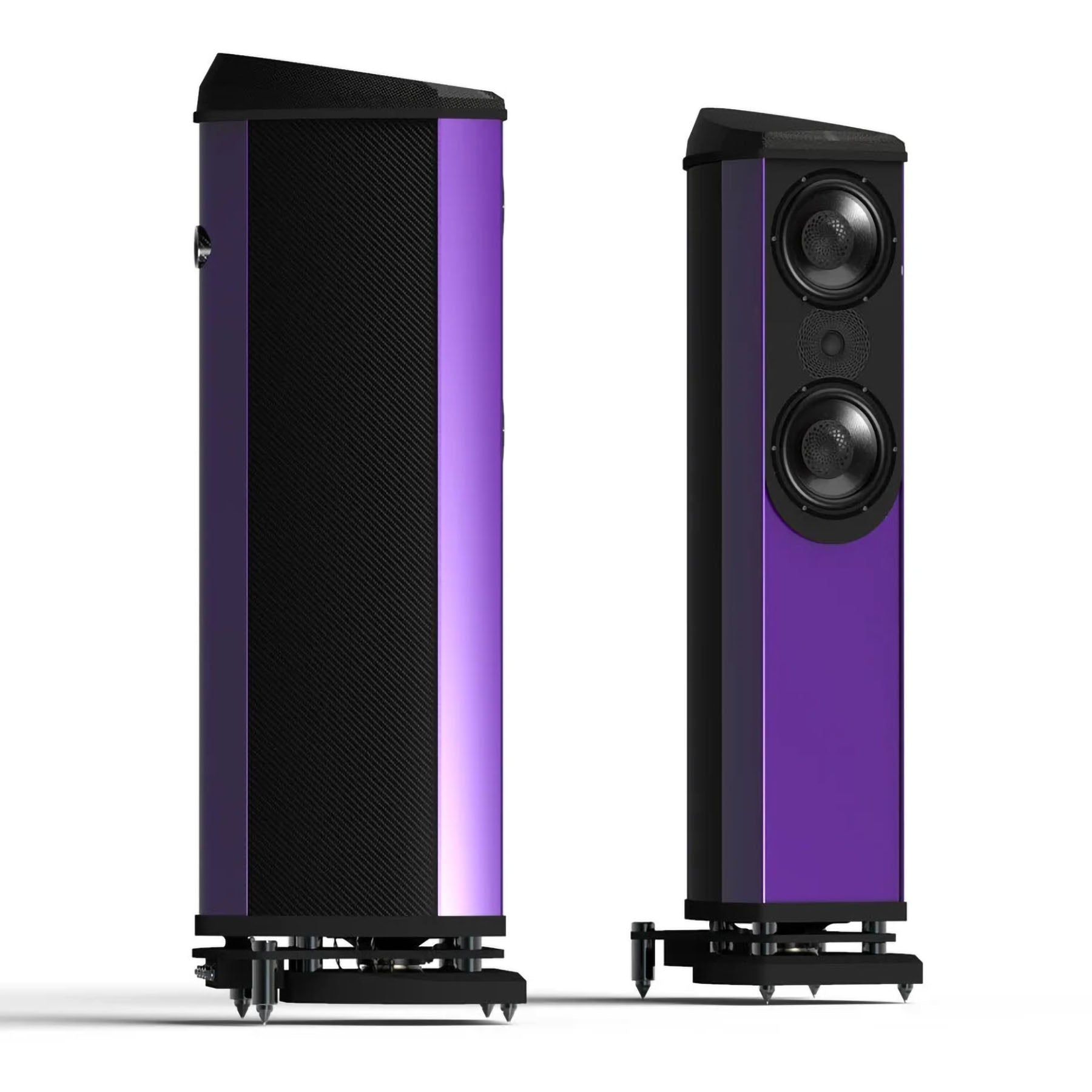
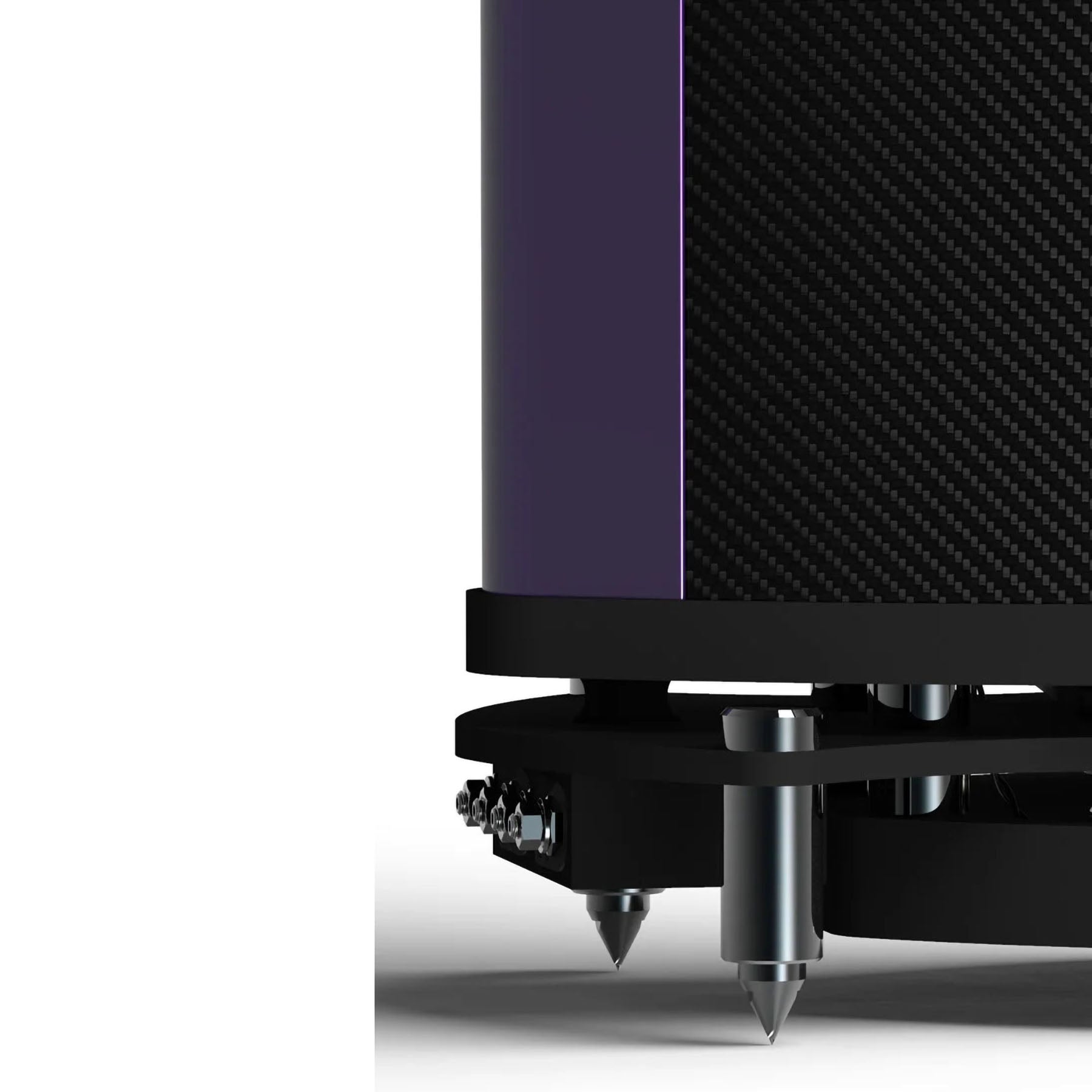
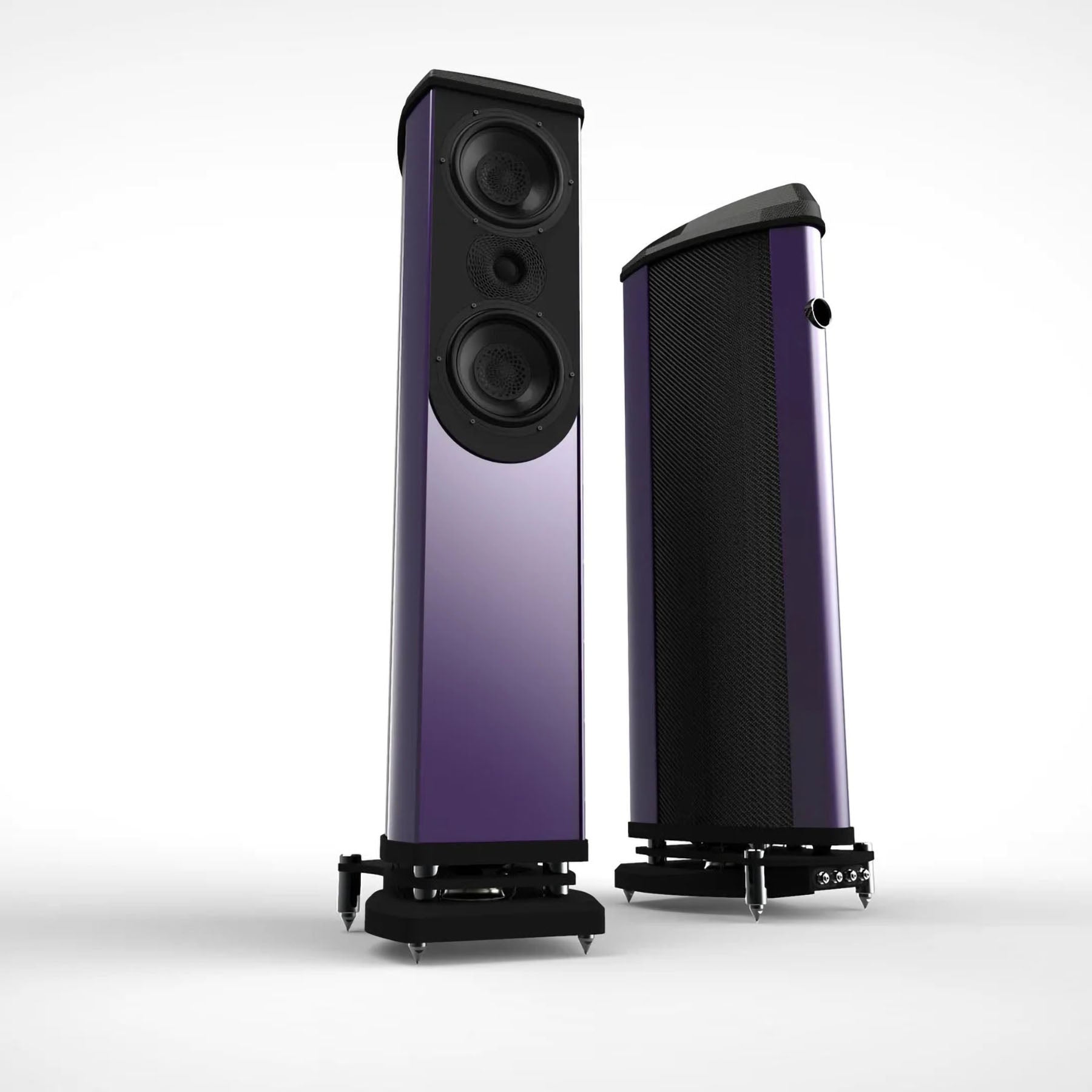
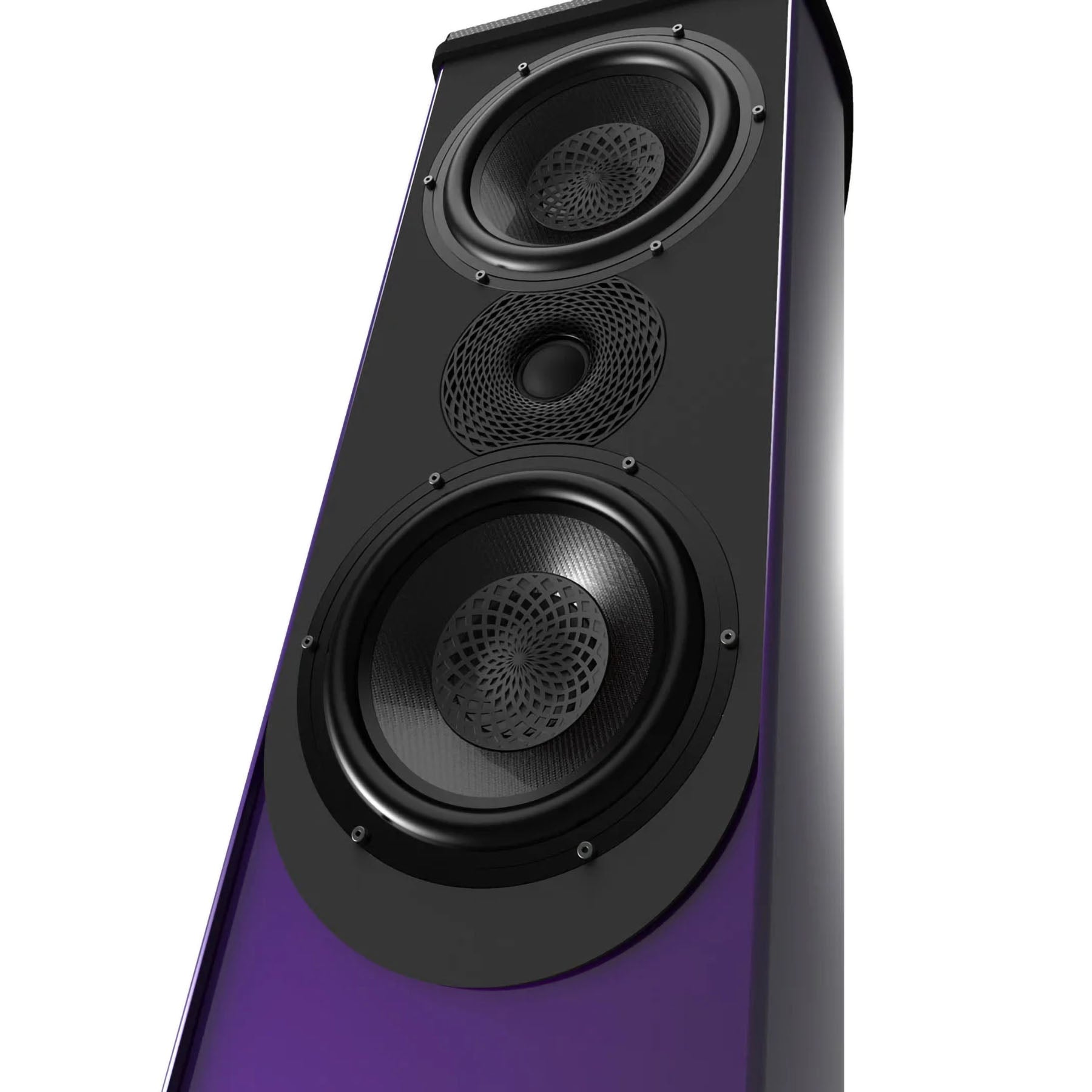

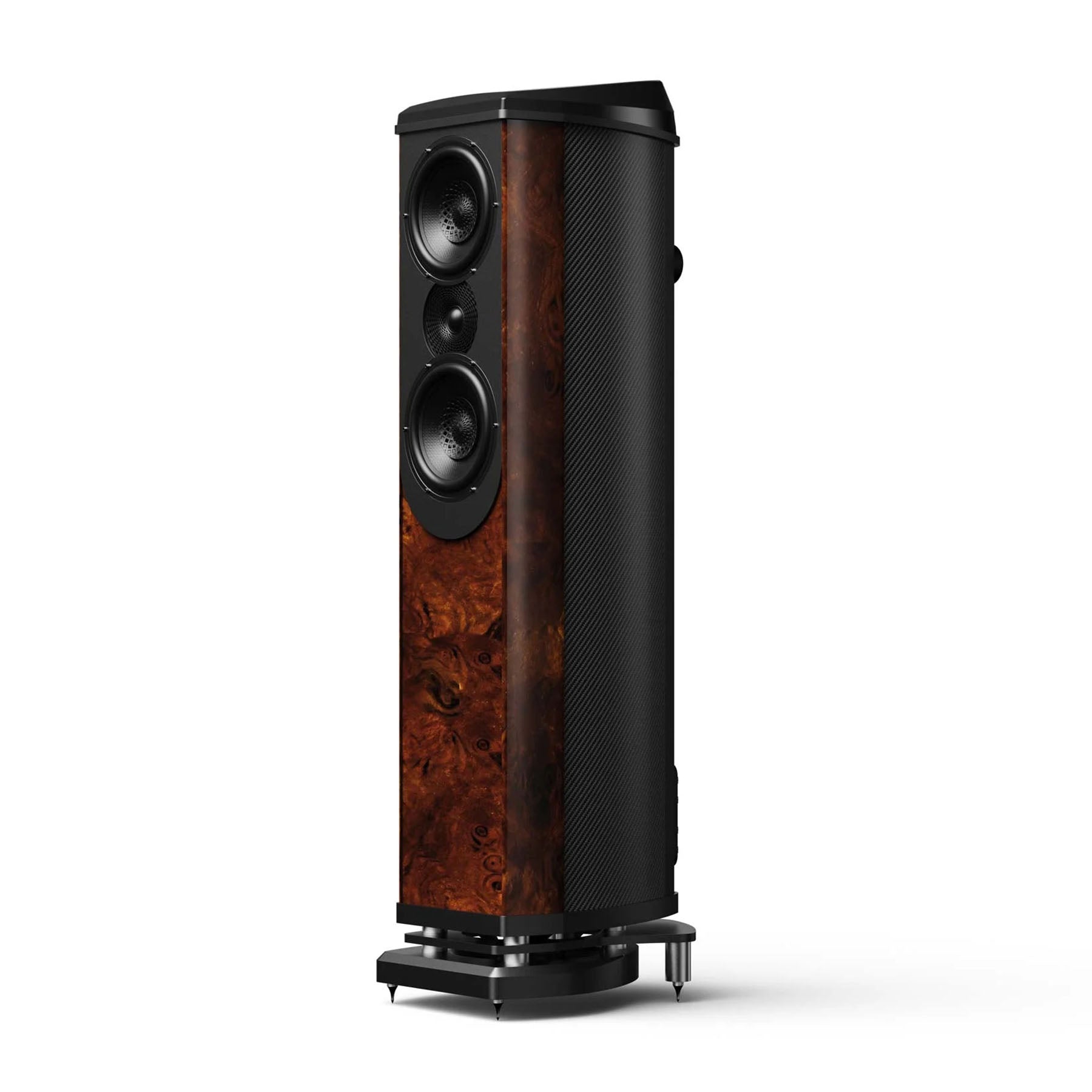
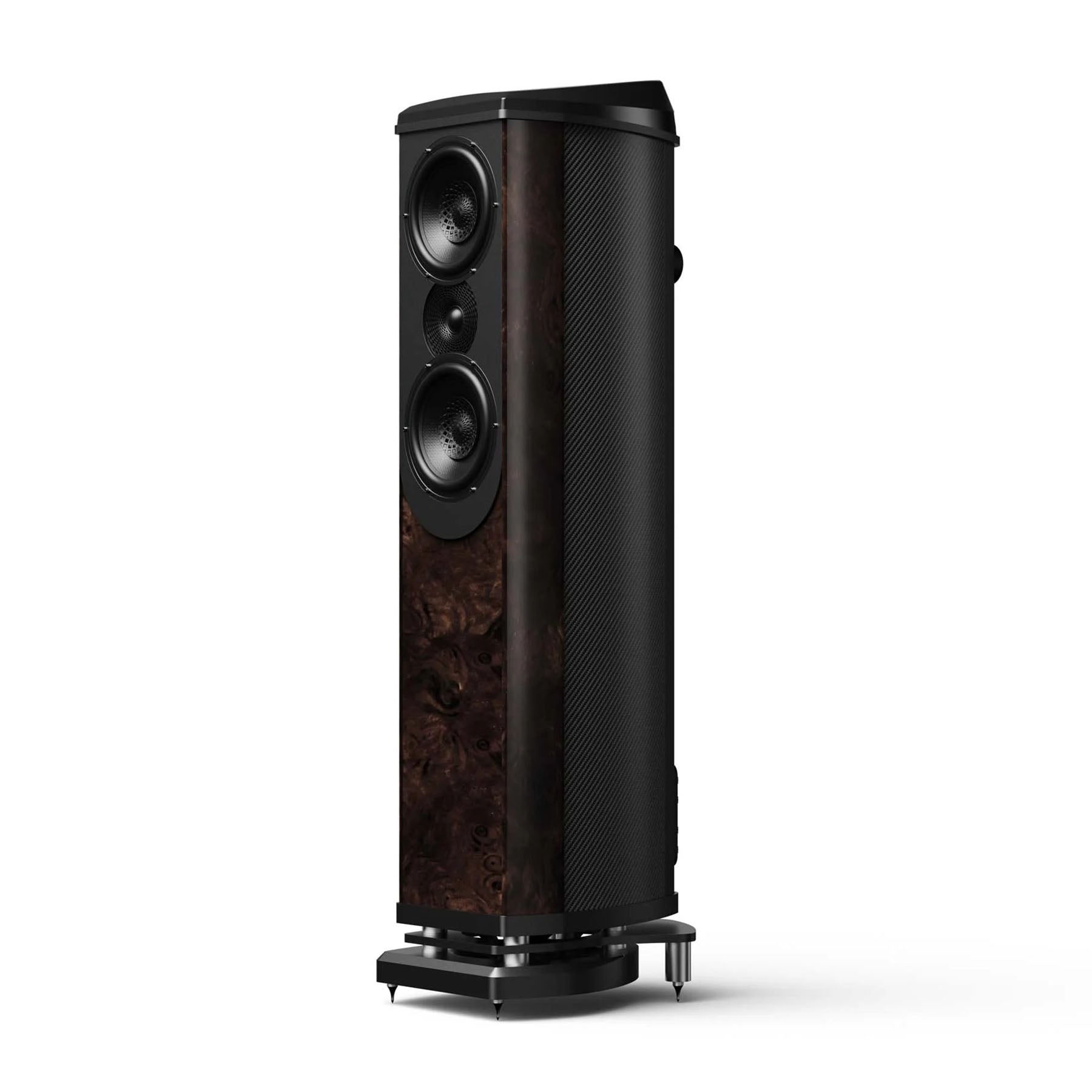
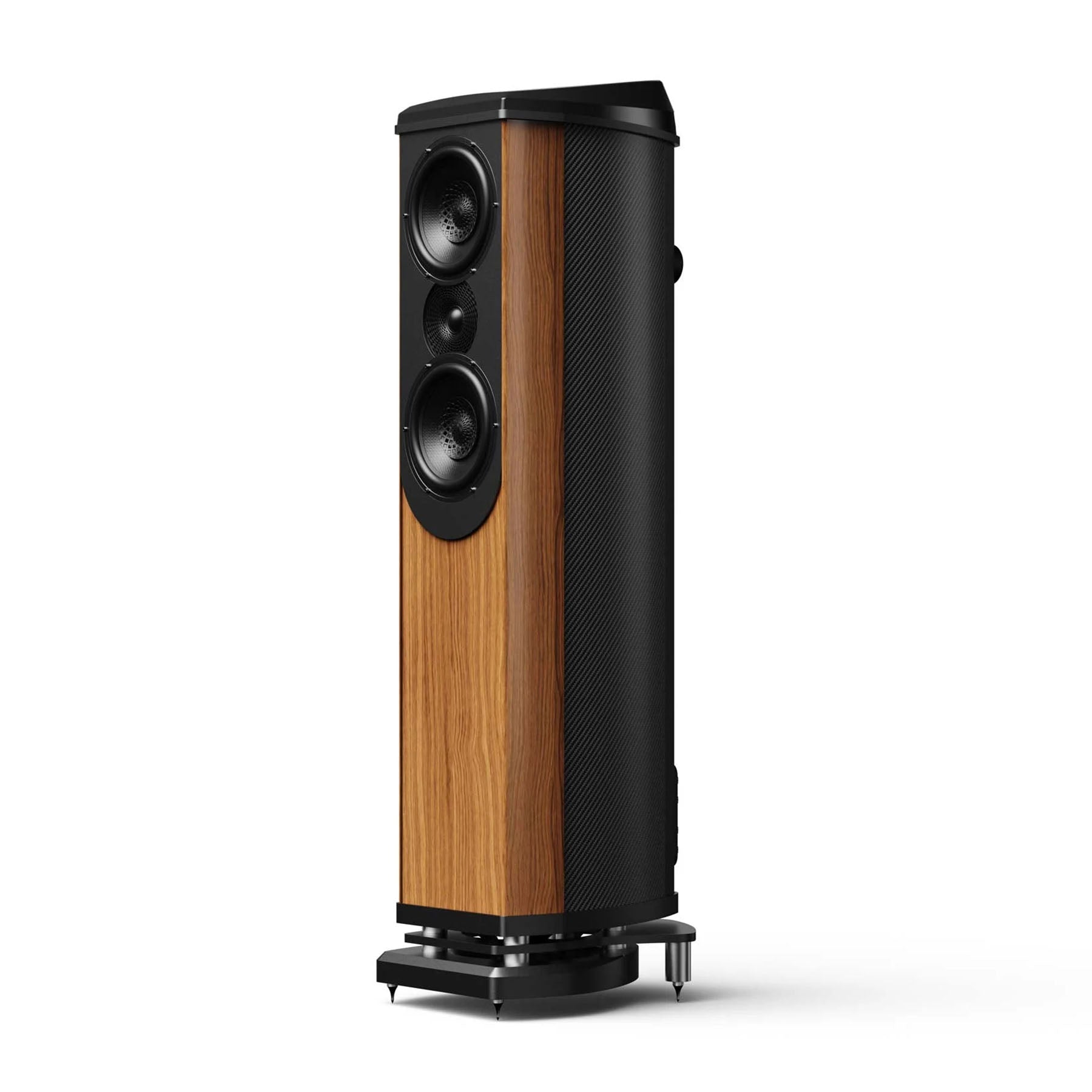
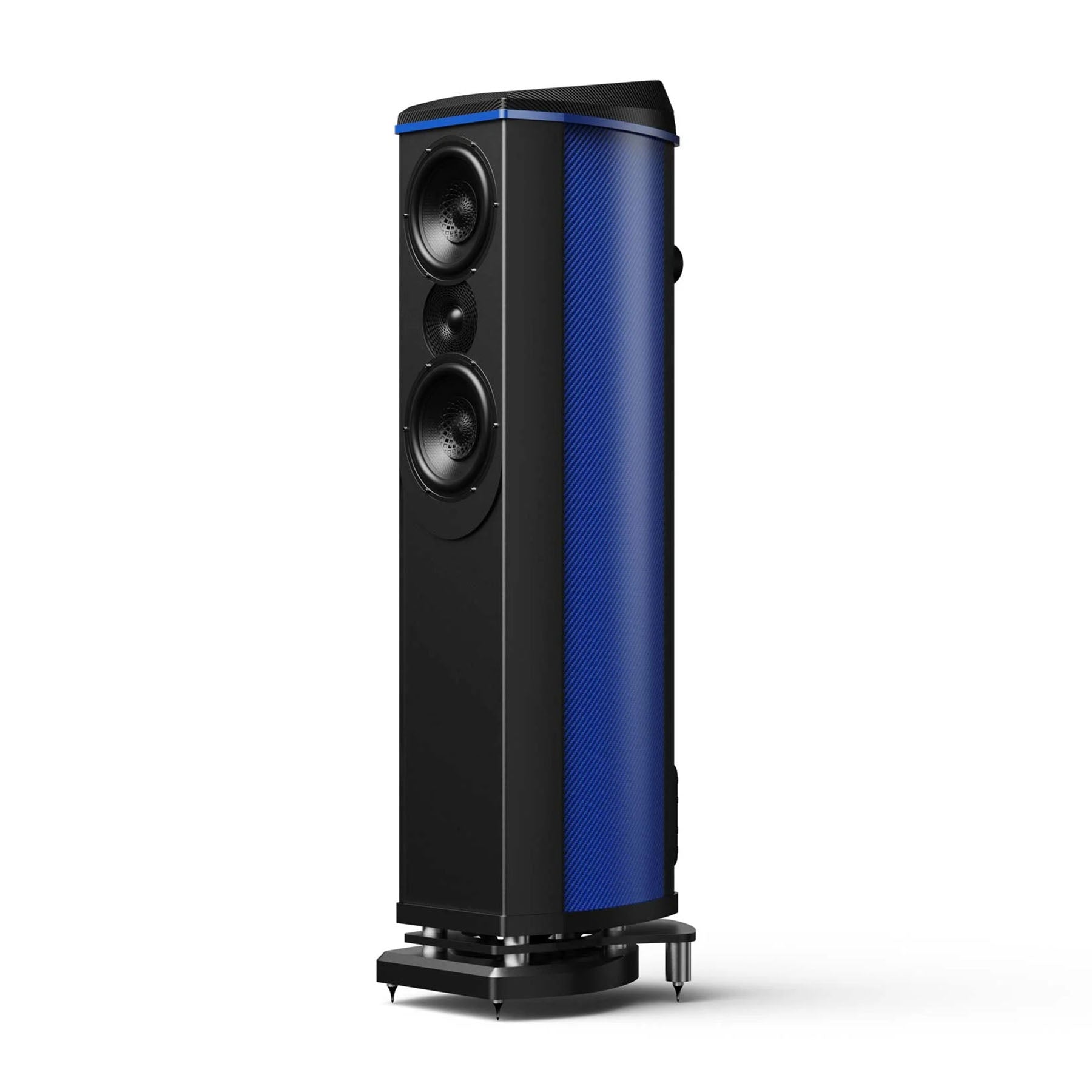
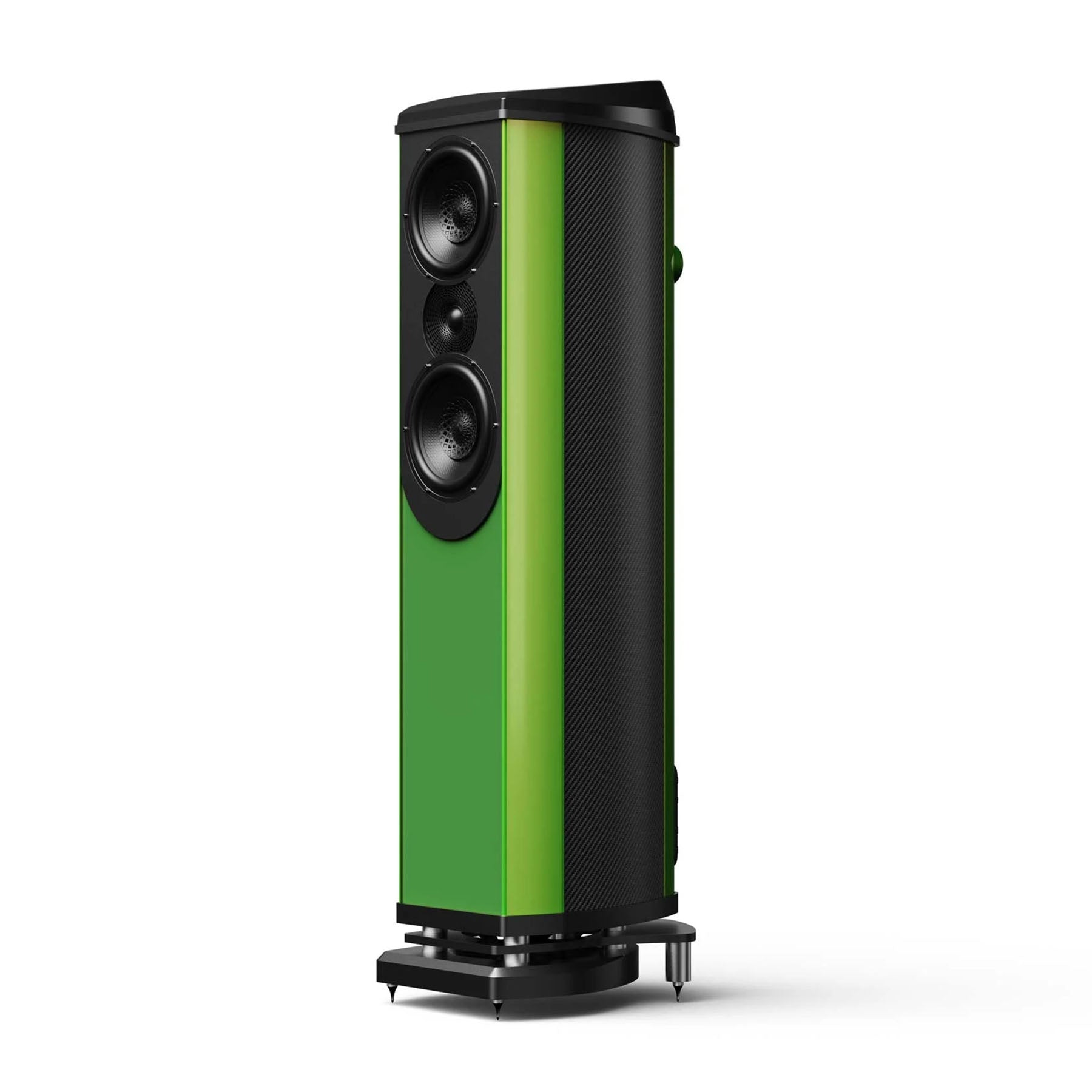
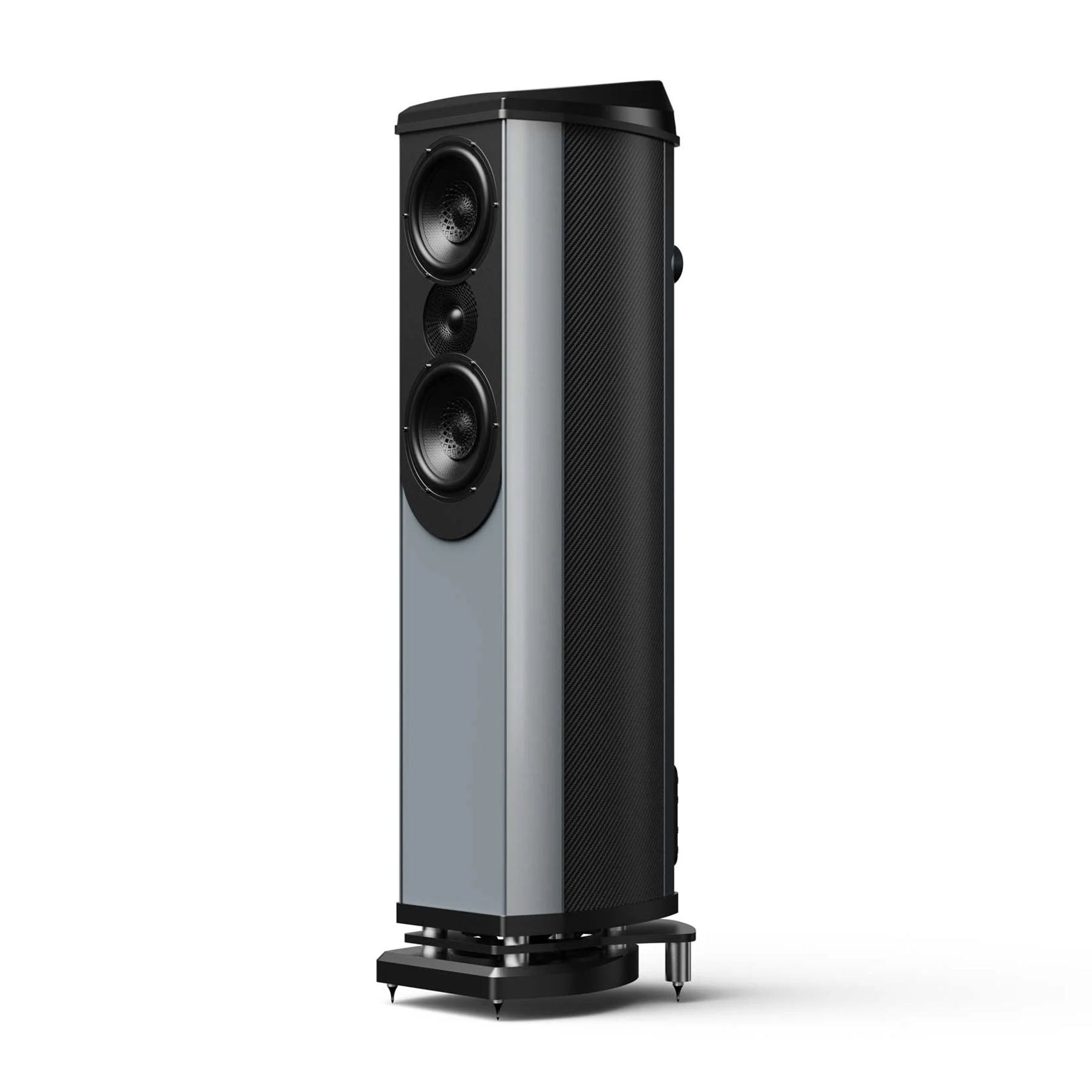
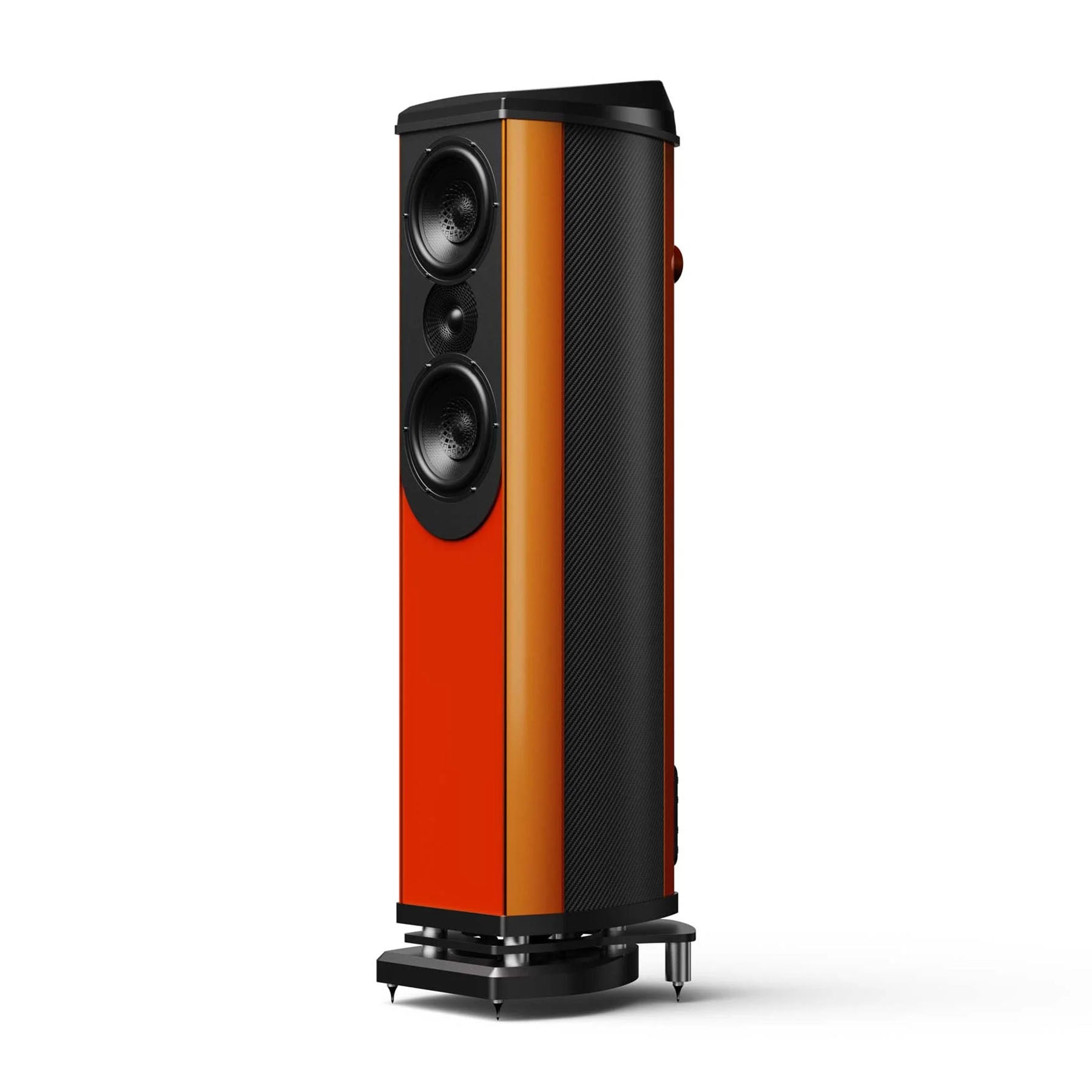
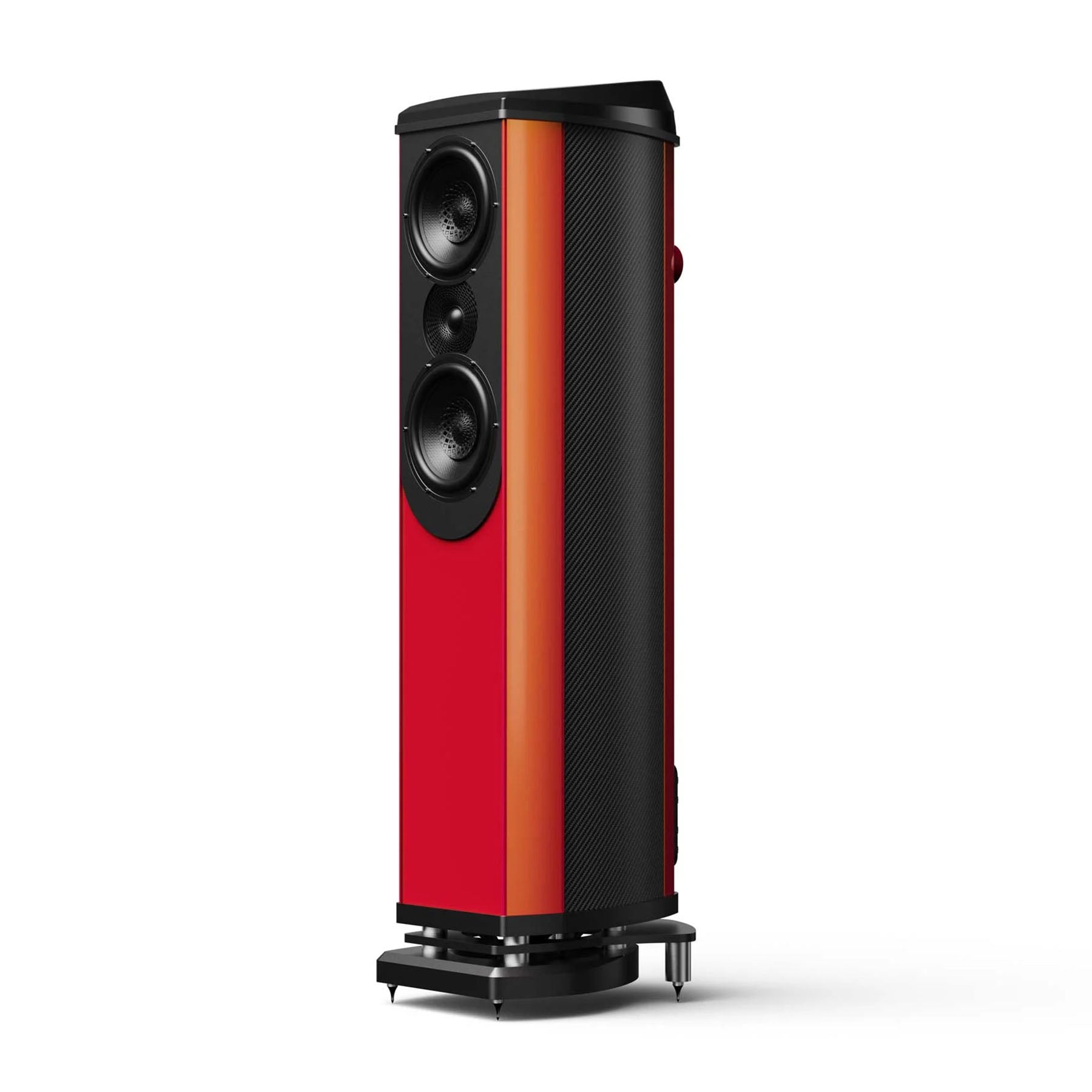
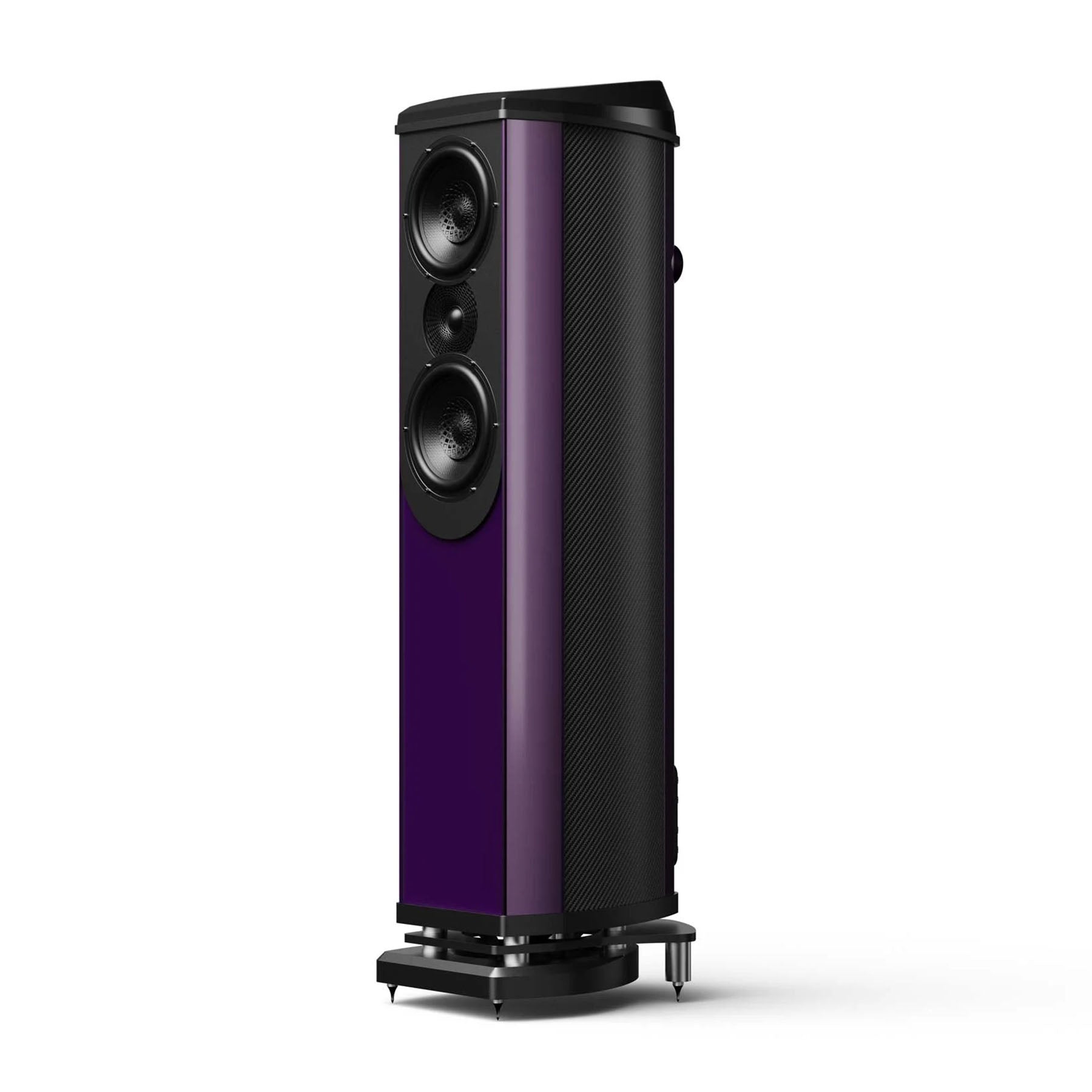
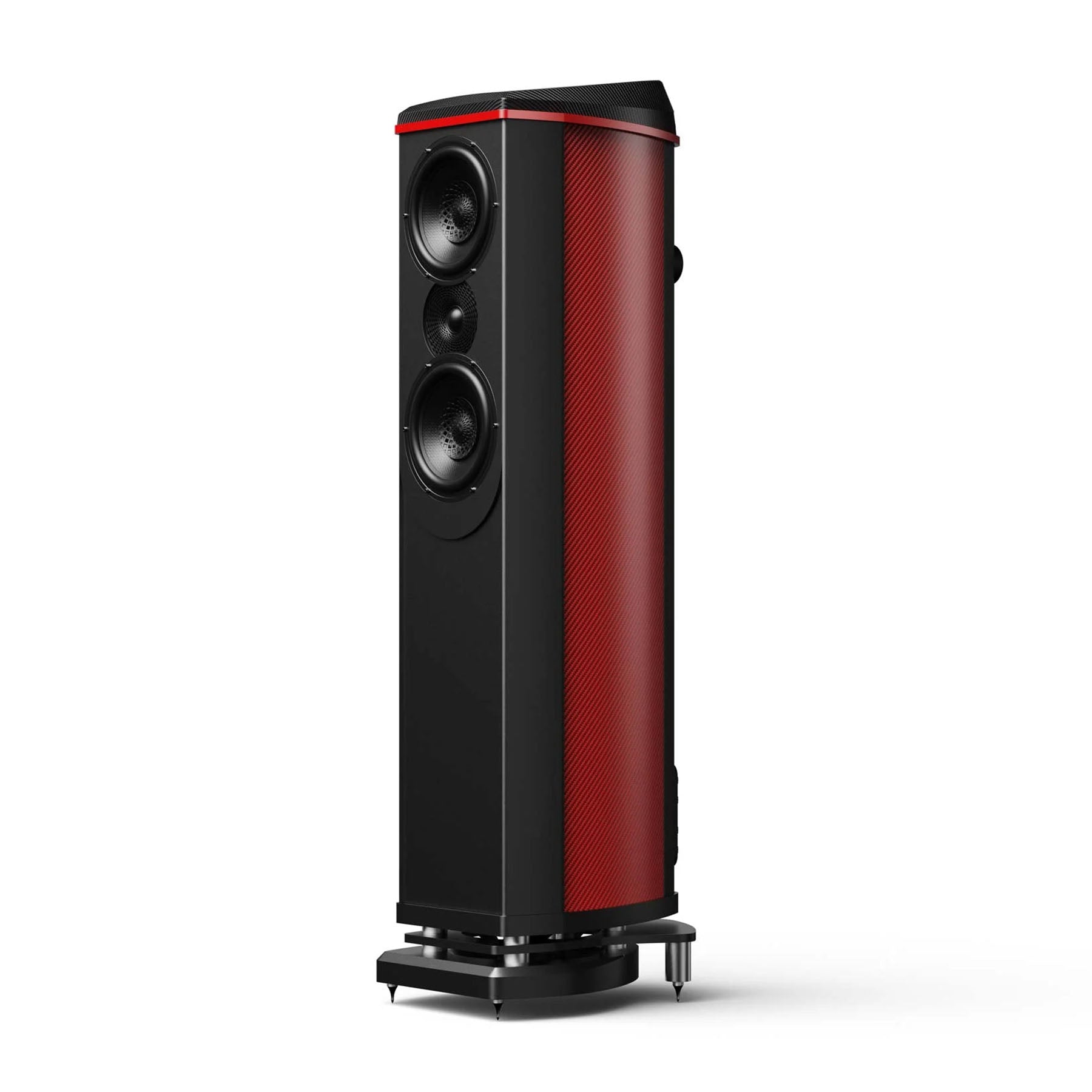
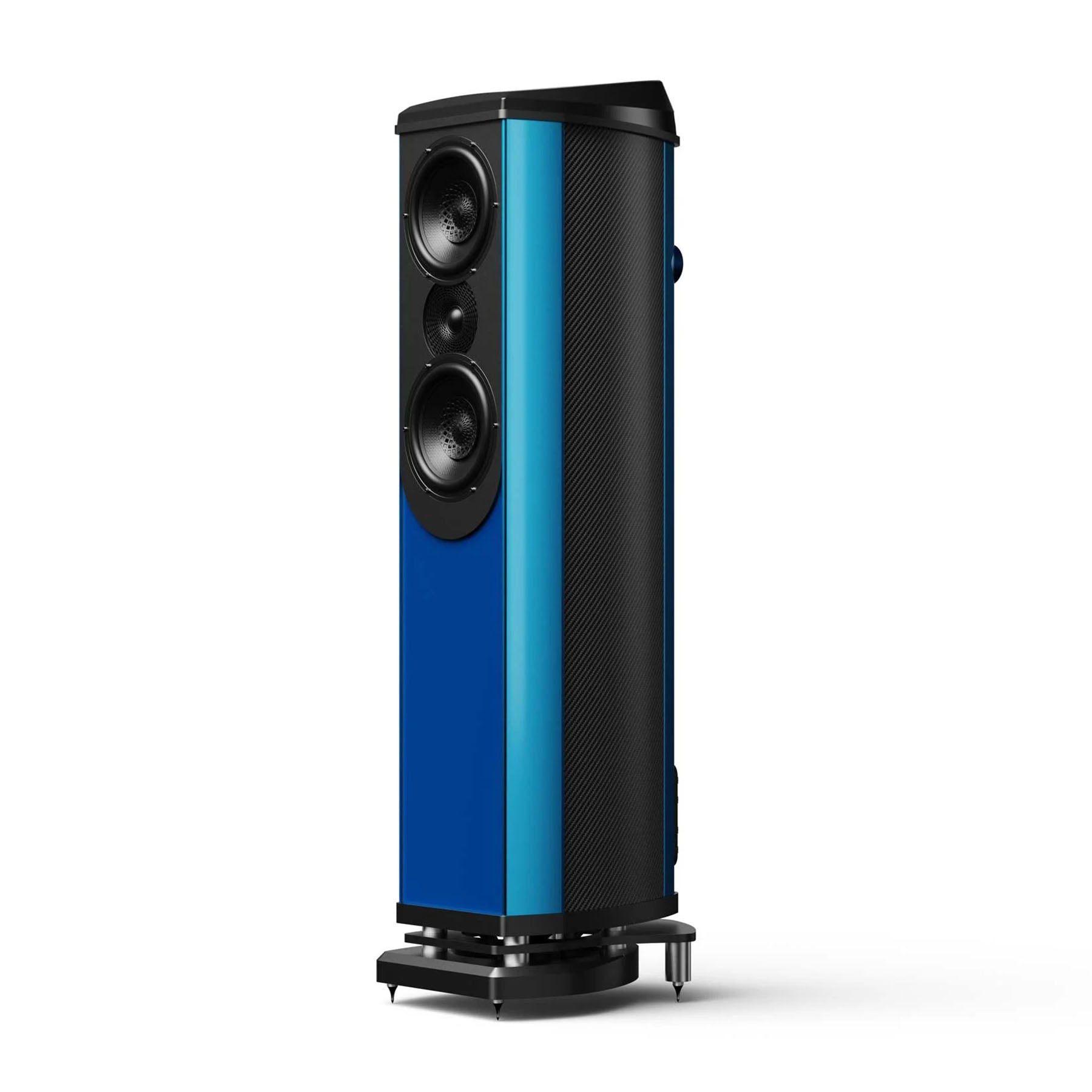
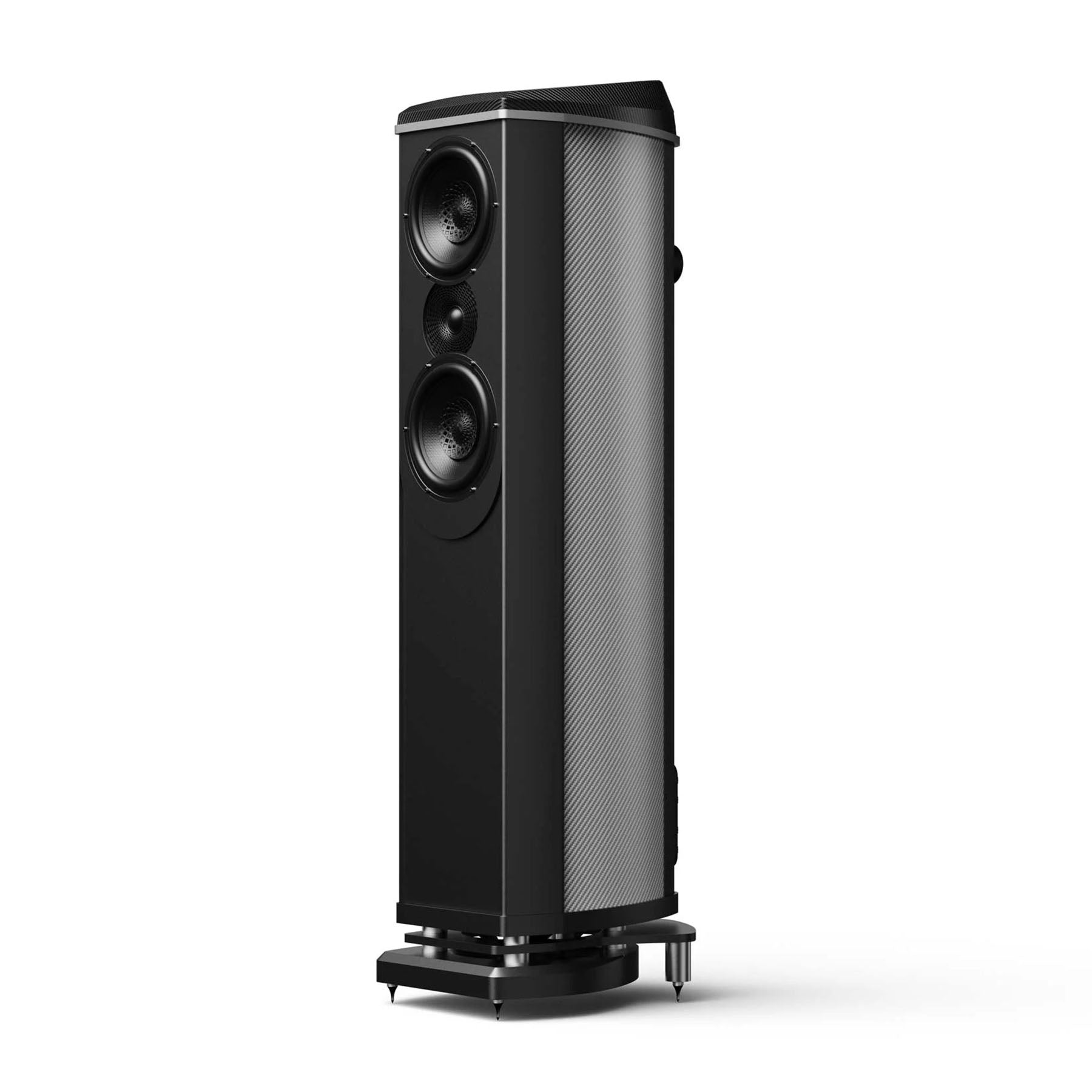
Wilson Benesch Fibonacci Series - A.C.T 3Zero 2.5-Way Floorstanding Loudspeaker (pair)
Isobaric Drive System Finish
Wilson Benesch Fibonacci Series - A.C.T 3Zero 2.5-Way Floorstanding Loudspeaker (pair)
Textured Black / Standard
22 Saint Kilda Road
22 Saint Kilda Road
Suite 2.02
St Kilda VIC 3182
Australia

Wilson Benesch
A.C.T 3Zero
Fibonacci Series 2.5-Way Floorstanding Loudspeaker
A.C.T. – ‘Advanced Composite Technology’ – a reference to the composite technologies upon which the Wilson Benesch brand was founded and subsequently has become synonymous with. The A.C.T. acronym was first used in 1991 for the company’s first loudspeaker, the A.C.T. One. The technology was subsequently used in the ‘A.C.T. Two’, the ‘A.C.T.’, the ‘A.C.T. C60’ and in the previous generation A.C.T. One Evolution. The new A.C.T. 3Zero, therefore, follows a long line of speakers, embodying the heritage of the Wilson Benesch brand and the classic A.C.T. design.
Similar physical proportions have been retained, however, the A.C.T. 3Zero marks a significant advance in the materials that are used to create the composite monocoque that forms the largest single component in any Fibonacci Series loudspeaker. The new biocomposite A.C.T. 3Zero Monocoque is made from naturally sourced, renewable and sustainable materials replacing almost all materials previously used that had been sourced from petrochemical sources. In terms of performance, the new monocoque is superior to its predecessor both in terms of damping and stiffness, leaving the new upgraded drive technologies free from cabinet colouration to deliver a new reference from the A.C.T. marquee.
The new A.C.T. 3Zero also marks the first time in history that an A.C.T. loudspeaker has been fitted with an Isobaric Drive System. The new A.C.T. 3Zero incorporates the IDS within the elegant, highly engineered three-part foot. Joining the Isobaric is a low-bass Tactic 3.0, the new Fibonacci Tweeter and a dedicated Tactic 3.0 midrange drive unit which is directly amplifier coupled. This reductive approach to crossover design eliminates phase anomalies and aberrations associated with complex crossovers, creating the shortest and purest signal pathway possible. This approach to design can be heard when you listen to a Wilson Benesch loudspeaker, the natural acoustic character, multi-layered detailed but natural timbre and the deep but integrated soundstage from the top to the bottom of the frequency band.
DESIGN

TACTIC 3.0 DRIVE UNIT
The structure at the centre of the diaphragm plays a critical role in the behaviour of the drive unit. Commonly referred to as the “dust cap”, the name understates the importance of this component. In the Tactic 3.0, Wilson Benesch added the Fibonacci Element.
Produced in house using additive manufacturing technology, the Fibonacci Element can be printed according to pre-designed parameters. Such is the precision of the additive manufacturing software, that the Wilson Benesch design team can see in cross-section and design three-dimensionally the optimal layup of carbon fibre and nylon, defining both stiffness and weight across the structure. The result is a new geometrical form that is comprised of a double curvature with both open and closed aspects in the form of a lattice structure again borrowed from natural geometry. 5 different materials and adhesives provide significant improvements in both the accuracy of the frequency response and the reduction of distortion.
This is a critical aspect of the relationship between the drive unit and its ability to integrate with the roll off of the tweeter and bass drive units. In the past, several materials have been drawn upon to enable the fine-tuning of this marriage. Additive Manufacturing has opened up a new chapter in the pursuit of this subtle but extremely important aspect of loudspeaker design. For the first time, the principal aspects of this structure can all be adjusted in a way that was previously impossible.

FIBONACCI SILK-CARBON HYBRID TWEETER
The latest iteration of Wilson Benesch tweeter technology builds upon the Semisphere tweeter design pushing it into the next generation. As with all Wilson Benesch designs, the advances of the previous generation are built upon an iterative research and development pathway. With the Fibonacci tweeter, advances have been made within the structures adjacent to the motor and the hybridised dome. The Fibonacci tweeter faceplate is formed from a carbon fibre - nylon composite structure creating a geometrically optimised structure - the Fibonacci Element - that has been inspired by sacred geometry found in nature. In terms of acoustic performance, the faceplate delivers a new benchmark in terms of flat frequency response and ultrawide dispersion. In addition, the Fibonacci Element is decoupled from the motor and tweeter chassis which almost entirely eliminates structural borne resonance within this critical structure that surrounds the tweeter dome.

A.C.T. 3ZERO BIOCOMPOSITE MONOCOQUE
The Fibonacci Series introduces a full line of loudspeakers from the Wilson Benesch brand that are built from the new A.C.T. 3Zero biocomposite Monocoque. The new monocoque marks significant advances not only in terms of the acoustic performance of the Wilson Benesch reference line, but it also represents a deliberate and conscious move toward natural, renewable and sustainable materials technology.

ISOBARIC DRIVE SYSTEM
The principal low-frequency load of all loudspeakers in the Fibonacci Series is delivered by the Isobaric Drive System. Here two Tactic 3.0 Drive Units combine to create an Isobaric Drive System. The Isotactic Drive System is responsible for reproducing an incredibly tight and controlled bass response that is perfectly integrated with all other woofers in the loudspeaker chassis, particularly the midrange Tactic 3.0 drive unit.

CARBON FIBRE COMPOSITE STEALTH TOP
Wilson Benesch fit a beautifully sculptural carbon fibre composite top to its reference line loudspeakers. The forms are inspired by natural, organic shapes, curves and free flowing lines found in nature.
The carbon fibre tops are extremely complex forms are created using a combination of hand sculpting in clay which are in turn measured using a laser and in turn loaded into advanced 3D digital computer aided design (CAD) software at Wilson Benesch. By importing data in this way, Wilson Benesch are able to use powerful software algorithms to further optimise the 3D form before manufacturing.
When a longitudinal sound wave strikes a flat surface, sound is reflected in a coherent manner. However, the reflective nature of a structure varies according to the shape of the surface. Uneven surfaces will diffract sound wave energy, rather than reflect it directly with little reduction in the energy of the sound wave which it perceived as colouration in the HIFI system. Therefore the complex ‘stealth like’ form is critical to the performance of the loudspeaker. By removing any flat, reflective surfaces and creating a highly complex structure, any reflective sound energy is scattered. This diminishes its energy and also avoids standing wave patterns within the listening space that are easily detected by the human ear as distortion or colouration.

DIRECT MIDRANGE DRIVE UNIT COUPLING
Wilson Benesch started development of its own drive unit diaphragms, including those made from a carbon fibre/epoxy matrix in 1995. Research was conducted using alternative hard dome materials. Without exception, Isotactic Polypropylene was favoured for its natural sound and the ability of this material to absorb energy and avoiding complex breakup modes in the diaphragm. This critical material characteristic allows the Wilson Benesch design team to achieve mechanically and acoustically what would otherwise be implemented in complex crossover designs with a series of inductors and capacitors. This reductive approach to crossover design maintains phase, linearity and the degree of control over manufacturing and design of both the drive unit specifications and the enclosure air volume allows Wilson Benesch to eliminate all crossover components in the midrange drive units of most Fibonacci Series models running the drive unit directly amplifier coupled.

PRECISION CNC MACHINED FOOT
One of the most important principles in structural engineering is loading. All modern buildings are built upon solid foundations. It is the reference point for everything above it, transferring the load of the structure into the ground. Within loudspeaker design, it is crucial to create a stable point from which the drive units can propagate complex and accurate waveforms that we appreciate as music. The A.C.T. 3Zero foot is constructed from three separate precision CNC machined elements. The design not only houses the powerful Isobaric Drive System, but it also adds mass low in the loudspeaker chassis and provides structural fixing points for 13mm steel ties to fix into. These steel ties run the length of the loudspeaker chassis and tie into the loudspeaker top.

13MM STEEL TIES: COMPRESSION IN THE VERTICAL AXIS
Just like the flagship Eminence design, the A.C.T. 3Zero enclosure is held under tons of compressive force using 13mm threaded steel bars which tie from the aluminium loudspeaker top-plate into the A.C.T. 3Zero foot. These vertical steel ties exert tons of compressive force in the vertical axis where the first resonant modes will emerge.
BESPOKE
ENGINEERED FOR YOU
Every Wilson Benesch is hand built for you. We offer a range of bespoke natural wood veneers, P1 colored carbon and automotive pearl and metallic paint finishes. Want to create something unique, contact us to create your own Eminence.
SPECIFICATIONS
|
DRIVE TECHNOLOGY |
Midrange |
170mm(7") Wilson Benesch Tactic 3.0 |
|
Tweeter |
25mm (1”) Wilson Benesch Fibonacci Hybrid Silk-Carbon Tweeter |
|
|
Low Bass |
170mm(7") Wilson Benesch Tactic 3.0 |
|
|
Isobaric Drive System 1 |
2x 170mm (7”) Wilson Benesch Tactic in Clamshell Formation |
|
|
|
||
|
CROSSOVER TECHNOLOGY |
Midrange |
Directly Amplifier Coupled |
|
Tweeter |
Second-Order, 5kHz High Pass Filter |
|
|
Low Bass |
First-Order |
|
|
Isobaric Drive System 1 |
First-Order 500Hz Low Pass Filter |
|
|
|
||
|
ENCLOSURE TECHNOLOGY |
Materials |
A.C.T. 3Zero - Advanced Biocomposite Monocoque Technology, Poly-Alloy, Hybridised Construction |
|
Midrange |
Reflex Port Tuned with Laminar Flow Guide |
|
|
Tweeter |
Labyrinth Sealed Tweeter Backplate |
|
|
Low Bass |
Infinite Baffle Sealed Enclosure |
|
|
Isobaric Enclosure |
Infinite Baffle Sealed Enclosure |
|
|
|
||
|
MEASUREMENTS |
Type |
TBC |
|
Impedance |
TBC |
|
|
Sensitivity |
TBC |
|
|
Frequency Response |
TBC |
|
|
|
||
|
DIMENSIONS & TERMINATIONS |
Height |
1132mm (44.57") |
|
Width |
194mm (7.64") Baffle // 276mm (10.87") Widest Point of Foot |
|
|
Depth |
376mm (14.8") |
|
|
Weight |
TBC |
|
|
Termination |
Bi-wirable terminal located on the loudspeaker foot at ground level |
SPECIFICATIONS
DRIVE TECHNOLOGY
Midrange
170mm(7") Wilson Benesch Tactic 3.0
Tweeter
25mm (1”) Wilson Benesch Fibonacci Hybrid Silk-Carbon Tweeter
Isobaric Drive System
2x 170mm (7”) Wilson Benesch Tactic in Clamshell Formation
CROSSOVER TECHNOLOGY
Midrange
First-Order, 5kHz Low Pass Filter
Tweeter
Second-Order, 5kHz High Pass Filter
Isobaric Drive System
First-Order 500Hz Low Pass Filter
ENCLOSURE TECHNOLOGY
Materials
A.C.T. 3Zero - Advanced Biocomposite Monocoque Technology, Poly-Alloy, Hybridised Construction
Midrange Enclosure
Ported Enclosure, shorter port on the loudspeaker exterior
Tweeter
Labyrinth Sealed Tweeter Backplate
Isobaric Enclosure
Ported Enclosure, longer port on the loudspeaker exterior
MEASUREMENTS
Type
2.5-way
Impedance
6 Ohms Nominal / 4 Ohms Minimal
Sensitivity
89dB @ 1-Meter on axis, 2.83V Input
Frequency Response
38Hz - 30kHz +/- 2dB
DIMENSIONS & TERMINATIONS
Height
1187 mm (46.7”)
Width
187 mm (7.4”) Baffle // 394 mm (15.5”) Widest Point of the Foot
Depth
408 mm (16.1”)
Weight
35.5kg (78.26lbs) Stand is integrated with the loudspeaker enclosure
Termination
Bi-wirable terminal located on the spine of the stand at ground level




